Crowsnest railyards then and now
Some forty years separate the two images seen here in this report. In them we look at the CPR’s Crowsnest Line, in the town of Crowsnest, straddling the BC/Alberta border. The first photograph was submitted to us by a reader of the BIGDoer.com website, and was taken way back in 1973. Our now picture shows what has changed – the railway is still there, but the yard is gone – and what hasn’t – the stunning mountains in back.
When the first image was captured, this location was a busy railway divisional point. What’s that you say? For one, it’s a base that crews operate out of. In simple terms, they grab a train and head out to the next division point, hand it off to another crew, get some rest, and the following day do it all again, this timing heading back the way they came.
In addition, locomotives may get fuelled or serviced at these stops and sometimes some marshaling of cars is done. Some might be added, removed or switch around within the train.
Division points are spaced out here and there along most railway lines. Crews are allowed to be on the job for a maximum of 12 hours and so the distance between must not be more then that in operating hours. It’s a formula arrived at by factoring in true distance, average operating speeds and line density.
With improvement in train efficiency, Crowsnest lost its divisional point status, I believe, in the late 1980s. Trains now travel west to Sparwood BC and beyond before swapping crews. Lethbridge Alberta, BTW, is the next division point in the east.
When the first photo was snapped, one can see just how busy this place was. There was a good sized yard, lots of arrival and departures tracks (a few still remain), a turntable and locomotive servicing facilities, and bunkhouses for the crews. Today, most of that is gone and where the yard once stood is a large field.
At one time there was a small town here as well. The old Summit/Border/Inn-on-the-Border hotel is still there and today is part of the Summit Creek Cabins guest lodge. The building, according to legend, is split down the middle by the BC/AB border. Google says otherwise and put is just inside BC. BTW, our shooting position is in BC but we’re looking towards Alberta, the border of which is only few dozen metres away.
While no trains passed by on our visit (we later found out we just missed one) a lot of railway activity can be seen in the old photo. The engine in front is a Montreal Locomotive Works (MLW) S4 switcher, CPR #7115, built in 1953 under license of the American Locomotive Company. It would be used to marshal cars about the yard. While it wears the then current CPR “action red” with “Pacman logo” paint scheme, introduced in the late 1960s, the other two locomotives seen are painted in older colours. This engine was retired around 1981.
Seen in behind on the right is an unidentified General Motors Diesel Division (GMDD) model GP9 built in the mid to late 1950s – it’s possibly an earlier GP7, a similar looking beast, but given the small number of them on the CPR roster, it’s probably not. Either way it was built in London Ontario, under licence of the Electromotive Diesel company in the US. It was one of the most popular locomotive models not only on the CPR roster, but on many other railways as well. Over six hundred were made for use in Canada and CPR had 200 of them. The US factory built well over three thousand more. Amazingly, the CPR still rosters many GP9s, most heavily modified, and so it’s quite possible this example still exists in some form. That railway sure is frugal: still using an engine that’s older then most people who operate it.
The engine on the left is from the Canadian Locomotive Company, the smallest builder of the three represented. This example, CPR #4053, is known as a model CPA16-4 and was built under license from the Fairbanks Morse Company in the US. As you see, all three Canadian builders had a similar license arrangement. This locomotive dates from 1952 and was retired only a couple years after the then picture was taken. The CPR never roster many CLC locomotives when compared to those from MLW and GMDD, but most tended to congregate in southern Alberta and BC. The railway was the last of size to operate this make of locomotive and as such it attracted many rail buffs to the area in the 1970s. All CLC locos were off the roster by 1975.
As you can see, Canada at one time had three locomotive builders. Now there are none, the last to close being the former GMDD plant in the early 2010s (CLC lasted to the late 1960s, MLW, the mid 1980s). Now all Canadian based locomotives are US built.
An old CPR “van” or caboose can be seen in the background in the old picture. Nice!
The track here is CPR’s Crowsnest line. It’s a conduit for coal heading east from the mines of Sparwood and Elkford and the line also hosts freights heading to and from the US and the interior of BC near Castlegar and Trail. Based on our own (possibly inaccurate) observations, a good 6-8 trains a day seem to travel the line. This stretch of track dates for the late 1890s.
The towering mass of Sentry Mountain can be seen in back. The true summit is just left and out of view, but two connected but slightly lower high points can be seen.
The “then” photo is copyright Bob Hooper and is used with permission. Bob has been shooting railway scenes for many decades and has graciously allowed us use of any of his photos for inclusion in these then and now posts. Thanks Bill! We had so much fun shooting this one.
If you have an old photo, one that is yours, that shows a train scene like this, or a street scene, and would like us to revisit the location in it to see what things look like today, and then document it all on this website, please contact us.
For these posts, we do not crop the “now” shot to make them fit better. We shoot using some advanced techniques we’ve developed over the years, capturing six or eight frames worth, all at slightly different focal lengths, and then pick the best one of that group for use, be they spot on or not. This one turned out pretty well, although now I realize that standing further to the right would have given even better results. The shoulder of the mountain seen far in back, to the left, is a bit low in relation to the ridge in front, in my picture. Oh well!
Check out some of our favourite then and now posts…
Legends of the Fall then and now .
Empress Alberta then and now.
Calgary then and now – First Baptist Church.
Then and now overlooking Wayne Alberta.
If you wish more information on what you’ve seen here, by all means contact us!
Date of adventure: September, 2014.
Location: Crowsnest, Alberta/BC border.
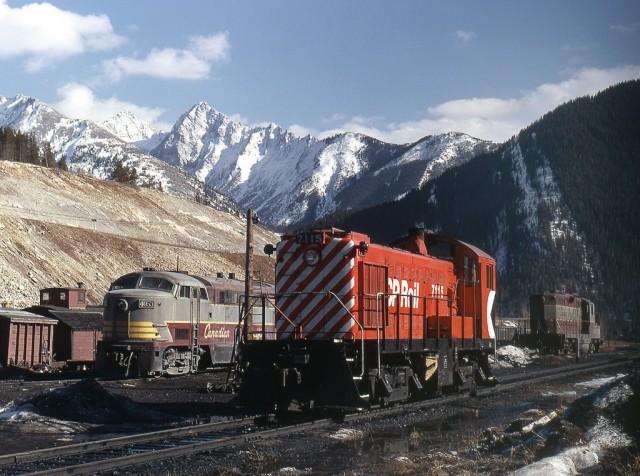
CPR’s Crowsnest yards, in the early 1970s. Photo by Bill Hooper.
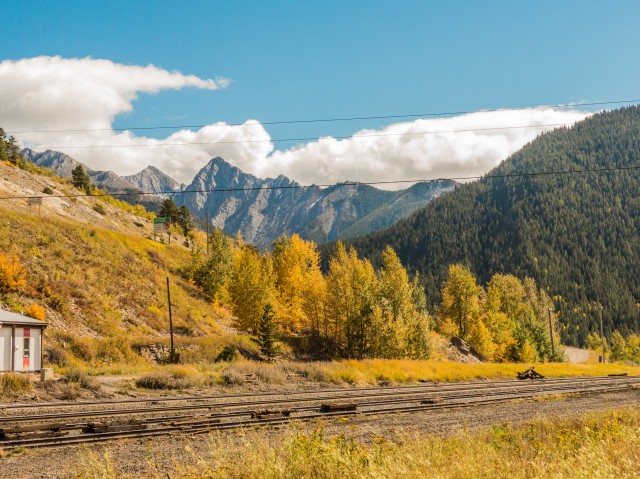
How it looks today…

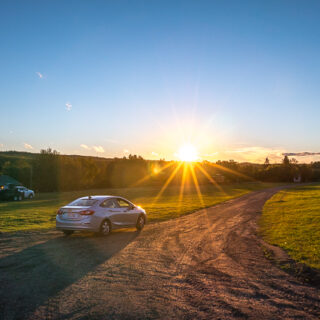
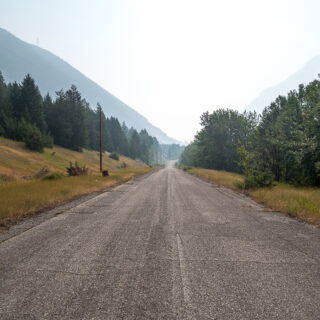
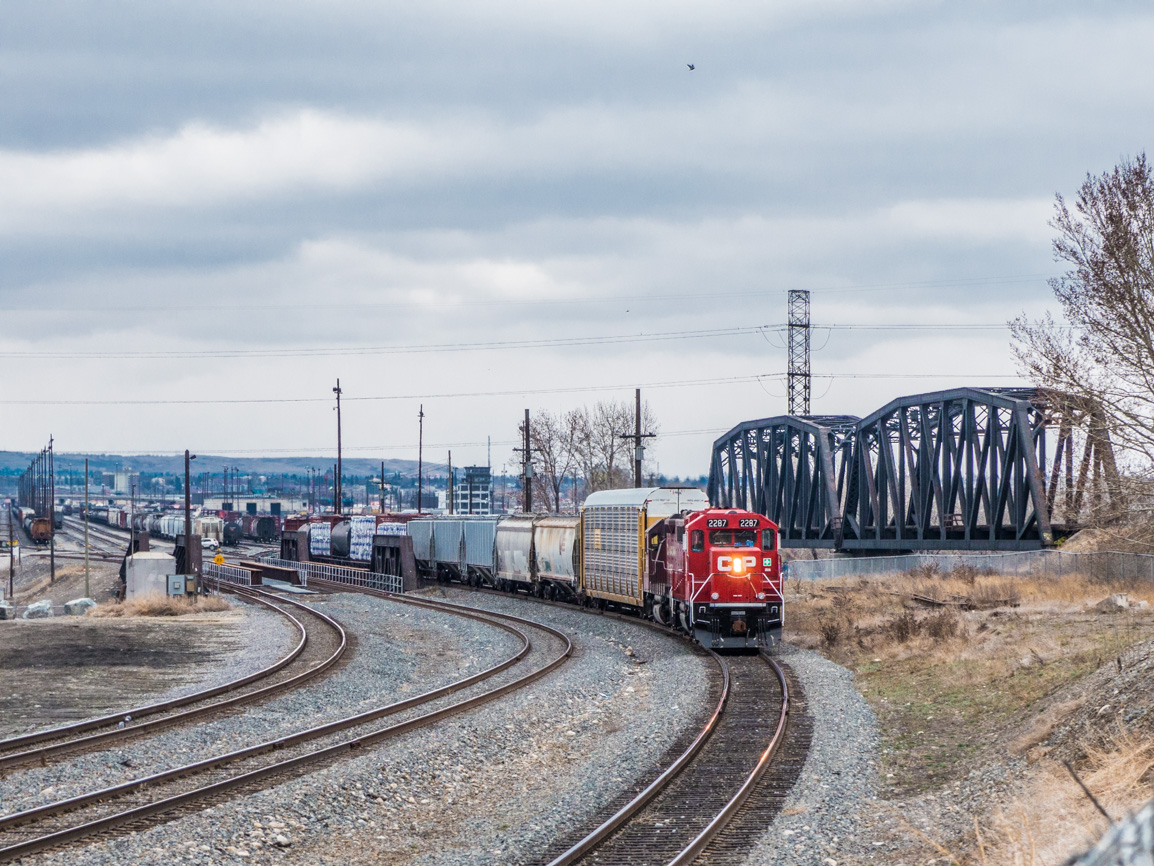
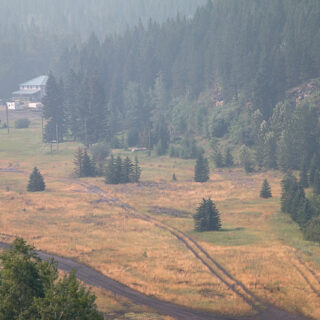
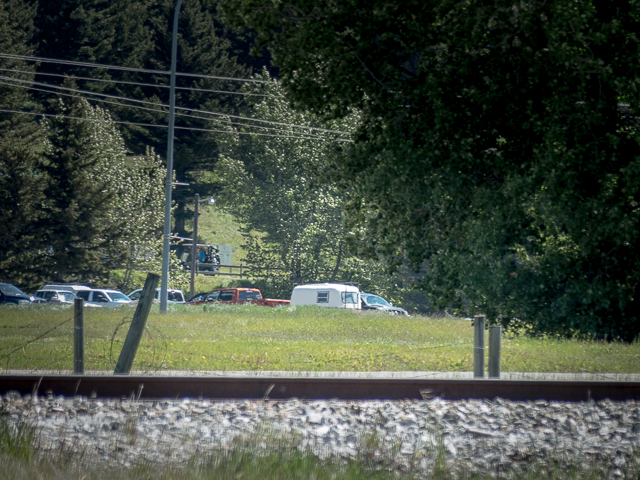
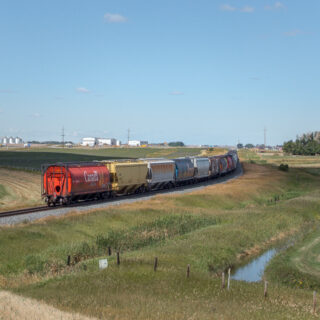
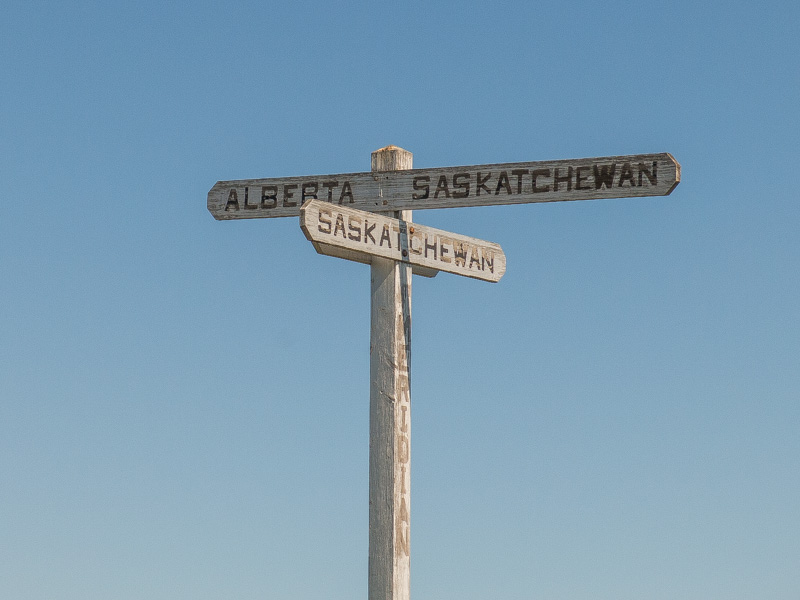
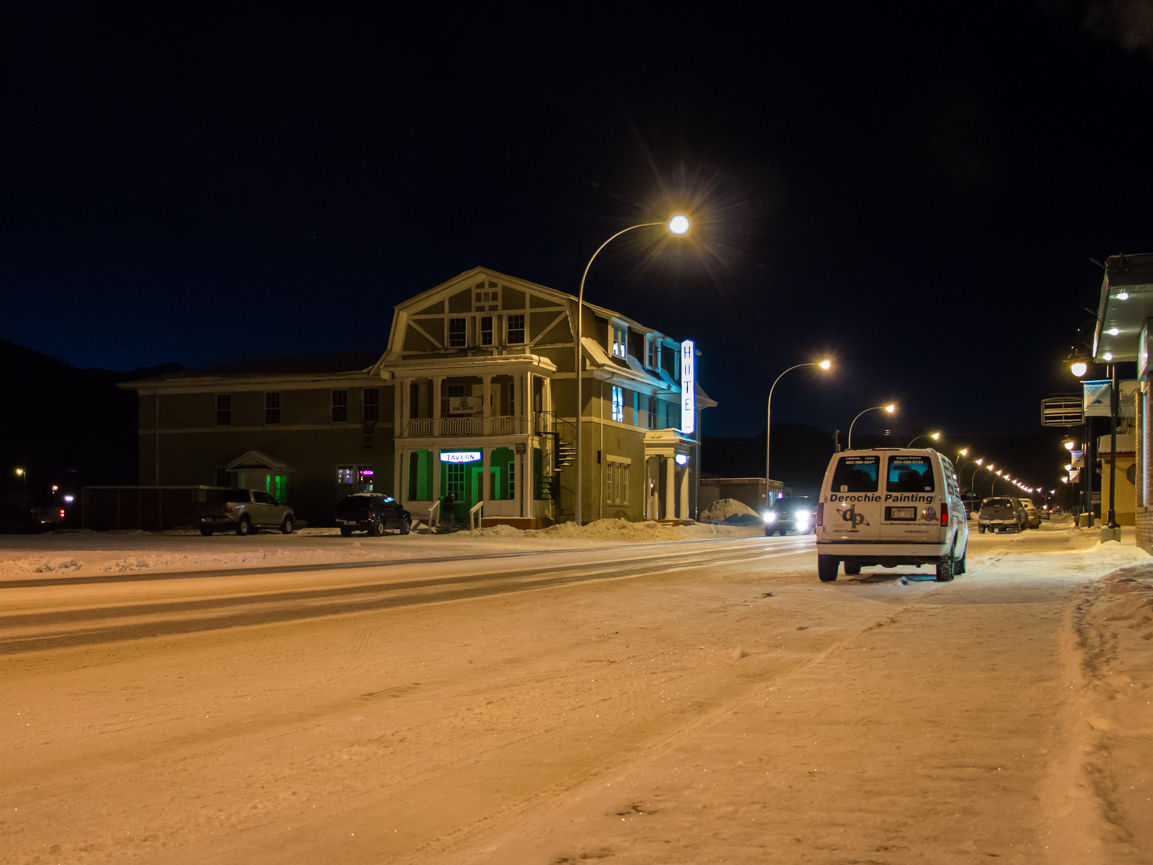
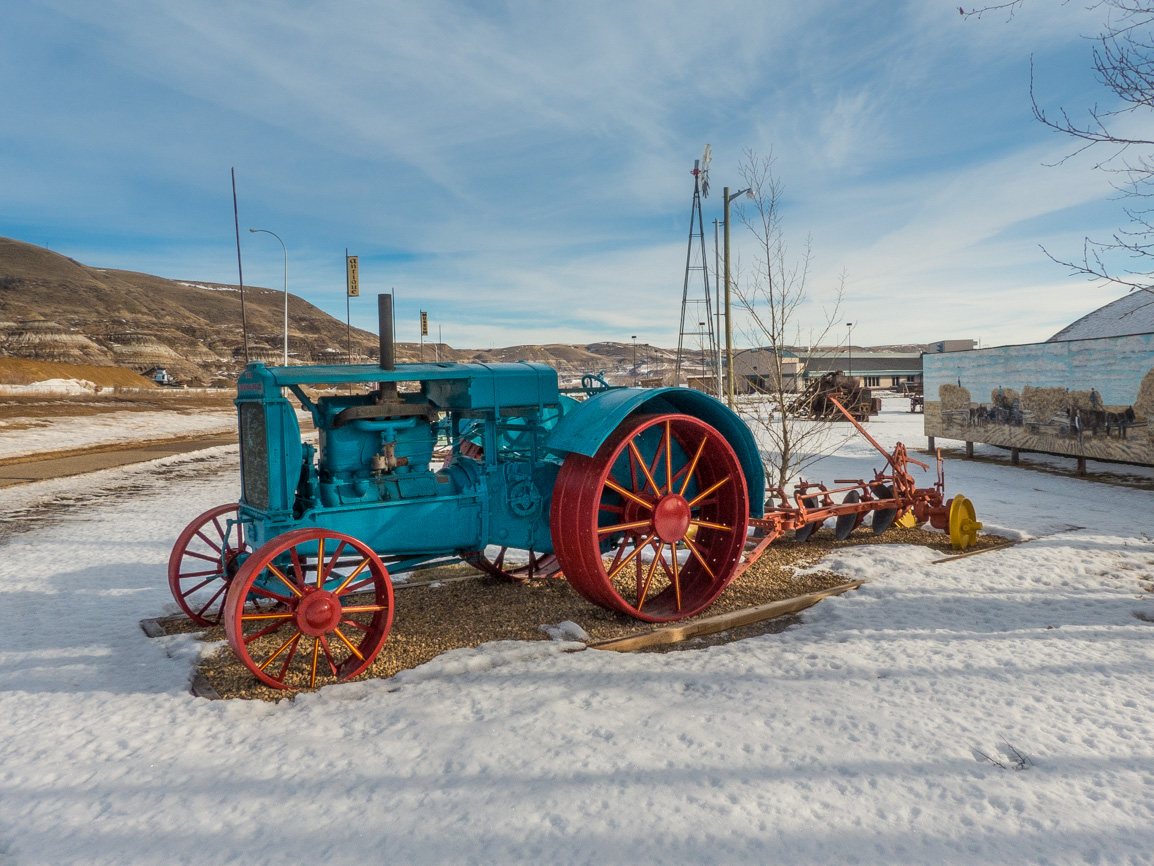
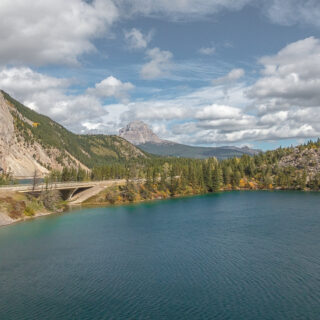
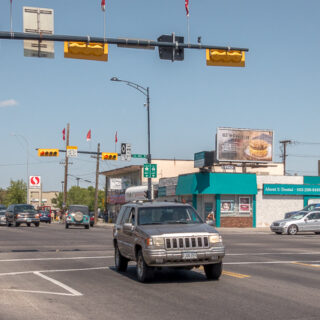







Love it! Thanks for posting!
These railways themed then and now posts are some of my favourites, but I don’t think many people, outside hard-core train buffs, appreciate them.